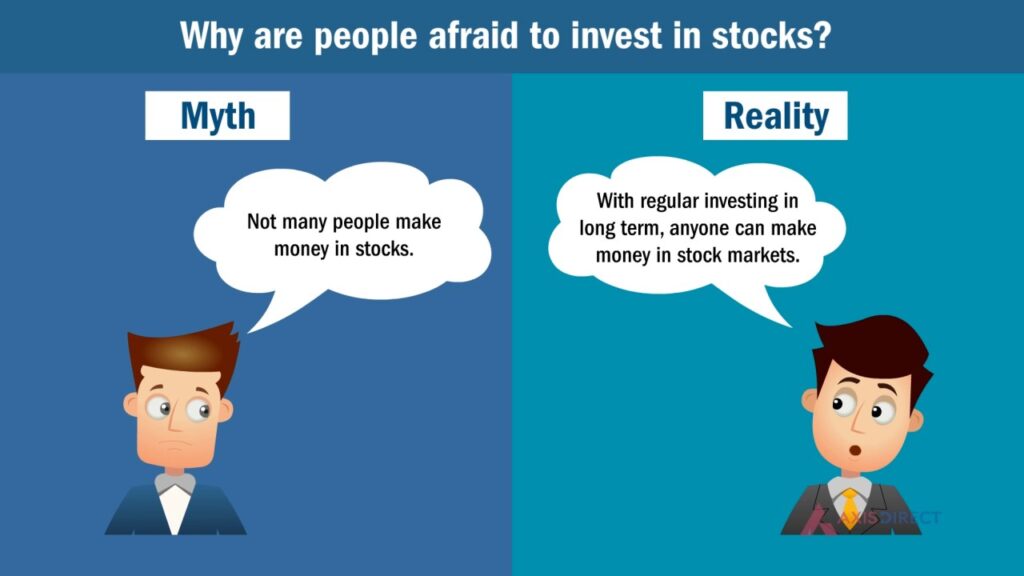Are you looking to invest in stocks but aren’t sure where to start? You’re in the right place because we give you all the tips to get you started. The emergence of fintech has made investing in stocks easy because beginners can now invest in stocks simply by opening an account through a website or a mobile app.
You might be scared of dipping your feet in this lucrative but risky sector, but when done effectively and in a disciplined manner, stock investing is among the top investing options to build your net worth.
You will find that wealthy people have most of their money invested in stocks. Before delving into how to invest in stocks, let us understand what investing in stocks is.
What are Stocks?
A stock is also referred to as a share of a company’s equity. It is a type of investment that represents the ownership of a fraction of a company. And when you buy stocks,
it means that you won a part of the company equivalent to the number of shares you hold, meaning you become a shareholder.
Step-by-Step Process of Investing in Stocks
- What type of investor are you
The stock market is the best way to gain experience if you are looking to start investing. Some people prefer to do it by themselves, others choose to work with an expert, and the rest decide to invest through their employer.
- Choose an investment account
Once you’ve decided how you want to do it, next, you need to choose an investment account. These include:
- Do-it-yourself
You must open a brokerage account. With the emergence of fintech, an online brokerage account is an easiest and fastest path to buying stocks. Your online broker will ask you a series of questions, such as your investment goals and the risk you are willing to take.
You will also have to read more materials on the stock market and keep yourself updated on all the news.
Your online broker allows you to buy stocks and other investment options like ETFs, mutual funds, and bonds if you want to manage your portfolio.
Choose an online broker that requires commissions on stocks and provides tons of education and research to enrich yourself at no additional cost.
- Robot advisor
This is the best option for investors who do not want to be involved in managing their portfolios. Robo advisor service provides you with a complete investment management service. They will ask you about your investment goals to tailor your portfolio based on your objective during onboarding.
Although it may sound a little on the higher side, your fees are only a fraction compared to an actual investment manager.
- Investing through your employer
If you have a small budget and saving can be a tricky affair; therefore, try investing at least 1% of your salary into your retirement plan available at your workplace. The good thing is that any deductions directed to your retirement plans are deducted before tax calculation.
You won’t even notice that the 1% is missing from your salary. If you have a 401(k), choose to allocate some of your capital to mutual funds or even your employer stocks.
Some financial institutions require a minimum deposit, so do your research and check broker reviews and things like trading fees, commission, account management fees, and minimum deposit.
Read Also: How to start investing for retirement
- Understand the difference between investing in stocks and mutual funds
If you are doing it yourself, you must differentiate between stocks and mutual funds. Some people confuse the two, but they are not the same.
- Stock mutual funds
Also referred to as exchange-traded funds, it is where you purchase a package that consists of small fractions of different stocks in a single transaction. So when you invest in a fund, you become a shareholder in each of those companies. You should use stock mutual funds to diversify your portfolio.
- Individual stocks
This is where you buy a single share or a few shares from the same company. It is an excellent way to start investing in stocks, but you will need substantial capital to buy many individual stocks to build your stock portfolio.
Compared to stock mutual funds, individual stocks are riskier, and you will find that most people investing for their retirement opt for funds.
However, it is improbable for a mutual fund’s price to increase significantly. The merit of investing in individual stocks is that it can pay off handsomely when share picks, but the odds of their going up is minimal.

- How much do you intend to invest in stocks?
Some online brokers, such as Betterment, do not have any fees, nor do they require a minimum amount to open an account; so, you can start investing in stocks with as little as $100.
Building wealth through stocks requires you to understand and appreciate the power of compounding interest. And to increase your earnings, you must increase the amount of money you allocate for investing in your monthly savings plan. To get started on the amount you need to invest in the stock market, you must ask yourself two questions:
- How much do you need to start investing in stocks?
The amount of money you need depends on how much the shares you want are going for. If you wish to get individual stocks, the amount of money depends on the share price; some can be just a few dollars, while others can go as high as thousands of dollars.
If you want funds and are low on cash, you can start with exchange-traded funds because the majority of mutual funds have a minimum deposit of $1000, but with $100, you can purchase an ETF.
As very few Robo-advisors need a minimum, you must deposit your investment money, and the Robo-advisor does everything else.
- How much should you invest in stocks?
The amount of money you invest in stocks depends solely on your budget and time. Invest the amount of money you can comfortably do without, and it’s advisable to leave it for a minimum of three years or more for it to ride out the highs and lows of the market.
To avoid withdrawing your investment midway, build up your emergency fund first, as it will allow you to ride out all the fluctuations in stock prices.
- Have an investment strategy
Consider your time horizon, financial objectives, risk tolerance, time constraints, and tax bracket when deliberating on an investment strategy. And after you have a clear understanding, you can choose from the three main investing strategies.
- Growth investing: This is where you find stocks that have displayed the ability to increase in revenue, earnings, and price appreciation over some time. Most growth investors believe that the trend will continue to rise and outpace the market, thus creating an opportunity to generate more profit.
- Value investing: this is where you invest in a stock undervalued by your peers in hopes of generating better gains as it catches up with the market.
- Income investing: Income investors place their money in stocks that pay out significant dividends. You can use these to generate a passive income to fund your lifestyle. Alternatively, you can reinvest to increase your earnings.

